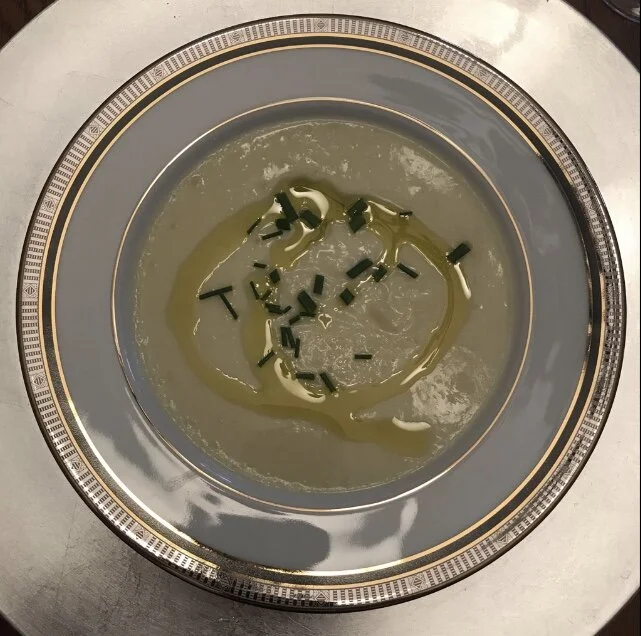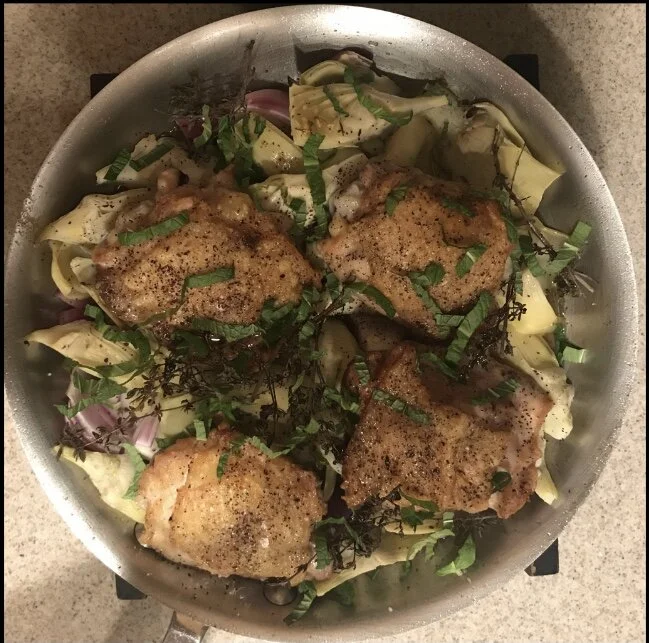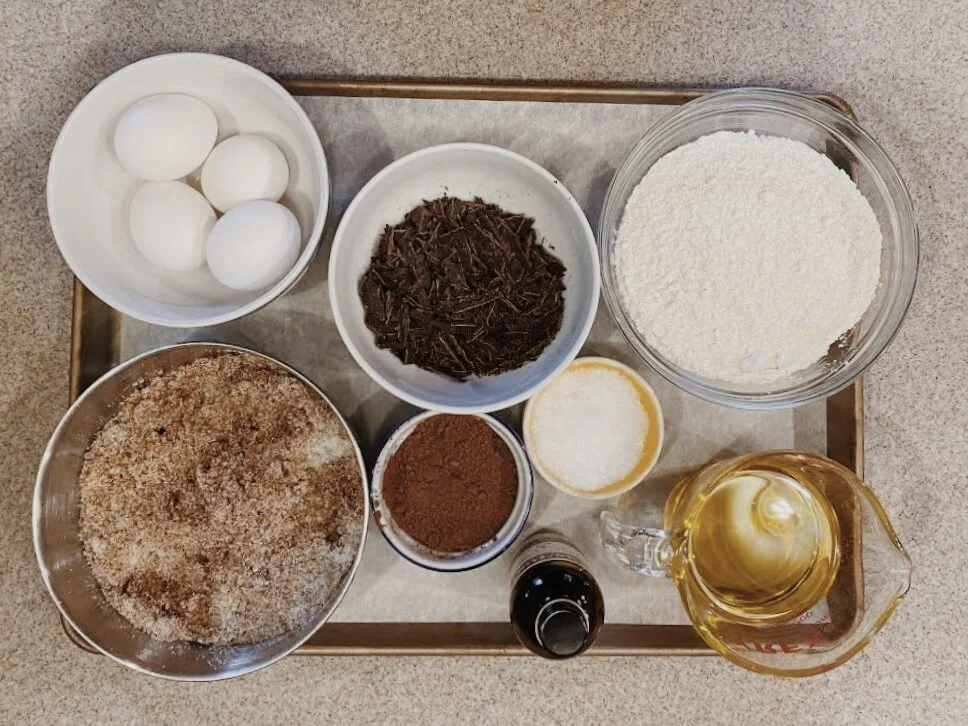A Guide to Soup and Stew
Photo by Spencer Margolis
Spencer Margolis
A couple years ago, I travelled to New Orleans for the Fourth of July. On one eventful afternoon, after making a visit to the bayou to see alligators in their natural habitat, my grandparents, my mother, and I took a stroll through the willow enveloped streets of Southeastern Louisiana. The lack of a driveable car and directions through deserted streets caused us to lose our way through the humid streets shaded by willows. However, our faces lit up in unison as my grandmother noticed a little run down house on the side of the road. There was an old lady sitting on her front porch in a rocking chair. She noticed our tired demeanors and invited us in. We reluctantly agreed to follow her back to her house, but we were not let down. Walking through the door was like walking through a wall of humidity to delightful smells all around. In the corner of her house in her kitchen sat a large pot. She motioned us over and gave each of us a bowl full of the “stuff” in the pot. I vividly remember my mouth watering while I waited to dig into the gumbo she had just given me. What she said did not phase me because I was so enamored with this stew. I took a seat and moved the spoon from the bowl to my mouth. That’s the moment I fell in love with food.
This feeling cannot easily be replicated, but that shouldn’t stop anyone from whipping up a great bowl of their favorite soup or stew. It’s a timeless classic that sits well with all ages, cultures, and times of year. Every family seems to have their own take on a warm bowl, such as my family’s borscht or matzo ball soup, while other families may have their version of Thai red curry or maybe something as simple as tomato soup and grilled cheese. Even in the fanciest of restaurants, vichyssoise is being served to hungry customers who are trying to escape the heat outside.
This article will have multiple recipes for different variations of soups: one easy, one fancy, one hot, and one cold. I hope that from reading this, people will be able to not only learn more about cooking and food in general, but also how to get in touch with their own culture and the food that ties it all together. So, without further ado, here are the recipes:
Vegetable Soup
This recipe is one of the simplest of all. All it requires are any vegetables you have on hand, some oil, salt, pepper, and some good stock. Some combinations I enjoy are potato and leek, tomato and red bell pepper, and mushroom and onion. It can be served for any occasion, hot or cold, and can be enjoyed by anyone. To make this recipe even easier, let’s follow the rule of threes.
Prep time: 10 minutes
Cook time: 45 minutes
Serves 4
Ingredients:
3 lbs of any vegetables (For instance, mushrooms, potatoes, tomatoes, carrots, leeks, etc.)
3 tbsp of olive oil (Preferably not extra virgin. EV olive oil should only be used in cold preparations)
A pinch of salt
Freshly cracked black pepper
3 cups of stock (Use any stock you like, like vegetable, chicken, or beef)
3 sprigs of any herbs (Rosemary, thyme, basil, etc.)
Method: Preheat the oven to 450 degrees. Wash all of the produce and peel if necessary. Place the vegetables on a roasting tray or cookie sheet and drizzle with the olive oil, salt, and pepper. Brush the vegetables with the oil mixture and place on any woody herbs if you are using them (these consist of sage, rosemary, thyme, or lavender.) Place this in the oven and roast for about 30 minutes or until a fork easily pierces the flesh. After this, add the contents to a blender along with the stock. Remove the herbs. Try to scrape up any burnt bits from the roasting pan because this will add flavor. Blend it until smooth--you may have to do this in two batches as to not overfill the blender. Taste for salt and pepper and serve warm or cold. Drizzle with some more olive oil (extra virgin this time) and top with some croutons if you would like.
Potage Celestine
Photo by Spencer Margolis
A creation of Potage Celestine
Potage indirectly translates from French to “any soup with a potato and leek base.” Similarly, celestine means celery, so this soup is a perfect blend of hearty fall/winter vegetables, though being perfect for fancy occasions when you want to impress someone.
Prep time: 10 minutes
Cook time: 45 minutes
Serves 4
Ingredients:
3 yukon gold potatoes peeled and cubed (about 1-½ lbs)
3 large leeks, roughly sliced and washed with the green, loose parts removed
6 stalks of celery, peeled and roughly chopped
2 tbsp of olive oil
2 tbsp of butter
Salt and pepper to taste
4 cups of stock/broth of choice
1 cup of heavy cream
Method: Heat a large stock pot over medium high heat and add half of the butter and olive oil. Once hot, add half of the vegetables and stir frequently until the leeks and celery become tender, about 12 minutes. Remove the vegetables and set them aside. Add the rest of the butter and olive oil to the pot along with the rest of the vegetables. Repeat until all the vegetables are cooked. Place the vegetables back into the pot and add the broth and salt and pepper. Bring to a boil and reduce the heat to low. Simmer the pot for about 20 minutes or until a fork inserted into the potatoes comes out clean. Add the cream to the pot and set in an immersion blender. Blend the whole lot until smooth. You can also do this in a blender in batches. Return the soup to the pot and heat until hot. Serve it warm and with a drizzle of cream and olive oil.
Chicken and Artichoke Stew
Photo by Spencer Margolis
A creation of chicken and artichoke stew.
This stew is a comfort food, meaning it’s quick and easy to assemble. Even if you don’t like artichokes, you’ll love this recipe because it’s a great way to incorporate the luscious flavor of the flower into your food. One way or another, you’ll be asking for more of this stew. The chicken thighs are tender with a crispy skin crust, and the dish comes together with a combination of oregano, mint, and sumac, to add a springy freshness. The white wine and chicken stock mix with the drippings from the chicken to provide for a delicately crafted yet flavorful sauce.
Prep time: 30 minutes to 2 days
Cook time: 45 minutes
Serves 4
Ingredients:
4 bone in skin on chicken thighs
2 cans of artichoke hearts, drained
1 red onion
2 tbsp of olive oil
Salt and pepper
½ cup of chicken stock
¼ cup of white wine
4 sprigs of thyme
A handful of fresh mint (optional)
A handful of fresh oregano (optional)
A pinch of sumac (optional)
Method: To begin, pat the chicken dry with a paper towel and season on all sides with salt and pepper. Leave the thighs to sit for at least 30 minutes or up to 2 days in the fridge, the longer, the better. If you put them in the fridge, make sure to remove them 30 minutes before cooking. During this 30 minutes, chop the onion into 16 wedges and slice the artichoke hearts in half. Add the olive oil to a large pan over medium heat. Once hot, add the chicken skin side down and cook for 4-5 minutes on each side. If the chicken still sticks to the pan when you flip it, it means they are not done yet. While the chicken is cooking, preheat the oven to 450 degrees. Remove the chicken from the pan and add in the onion wedges flat side down and then add the artichoke hearts. Stir the mixture occasionally until the onion is fragrant, or about 5-10 minutes. Add the chicken back on top of the vegetables with the skin side up and any juices from the plate they were resting on. Toss the thyme sprigs around the chicken and add the chicken stock and white wine to the pan, making sure to submerge the chicken partially but not to cover the skin. Place in the oven for 12-15 minutes or until the chicken is cooked through. Thighs should reach 175 degrees, or, if you can, keep them at 165 degrees for 10 minutes. If using white meat, the same applies but move everything down another 10 degrees. Once the chicken is done, remove it from the oven and sprinkle with the fresh herbs. Spoon the chicken, herbs, and vegetables onto a plate and top it off with the sauce from the bottom of the pan.
Gazpacho
This soup originates from Spain, and is traditionally served cold. Think of it as a cold tomato soup. Because nothing in this soup is cooked (except for the blanching of the tomatoes and roasting of bell peppers), you want to use the freshest and highest quality ingredients you can find. This is also a very basic recipe, so if you want to add more flavor, you can add certain spices, herbs, or maybe even chili peppers.
Prep time: 10 minutes
Cook time: 15 minutes
Serves 4
Ingredients:
4 Roma tomatoes
4 cloves of garlic
½ of a red onion
1 English cucumber
1 large bell pepper (red, yellow, or orange will suffice, but don't use green)
½ cup of EV olive oil
Salt and pepper to taste
A handful of torn, crusty bread
A bowl of broth
Method: Bring a pot of water to a boil. Also prepare a bowl of ice water. Score an X into the top of each tomato. Once the water is boiling, add the tomatoes and cook for 30 seconds to a minute. Remove the tomatoes from the water and immediately place them in the bowl of ice water. Let them sit for a couple minutes to allow the skin to shock. Once they have sat, peel each tomato’s skin starting at the X at the top. While doing this, place the bell pepper on the grate of the stove and turn the heat on medium. Keep flipping the pepper until all sides are charred. Place the pepper in a paper bag and leave it to sit until it cools. Once cooled, remove the char from the bell pepper, cut off the top, and scrape out the seeds. Peel and scoop the seeds out of the cucumber as well. Place the tomatoes, cucumber, onion, bell pepper, black pepper, olive oil, and salt into a food processor. Blend it all on high until completely smooth. While the blender is running, remove the crust from the bread and place it in some broth. Let the bread soak until it is completely wet. Add this to the blender and continue blending. Taste the soup for salt and pepper, and for the desired consistency. Serve cold drizzled with olive oil.








